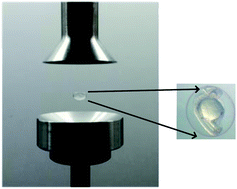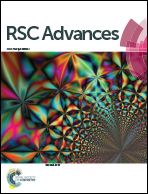Analysis of the effects of acoustic levitation to simulate the microgravity environment on the development of early zebrafish embryos†
Abstract
In this work, an acoustic standing wave field (ASWF) is used to simulate the space environment, which shows characteristics such as microgravity and the absence of containment and contact. Zebrafish embryos, used as the species under study in this work, were raised within the acoustic field by the authors, allowing the biological effects on such early zebrafish embryos, at each developmental stage and within the ASWF creating the acoustic levitation (AL) technology used, to be studied. In this way, the biological safety of thee specimens, simulating the space environment, could be carefully evaluated. Some important indexes of the process of zebrafish development, such as mortality, malformation rate, hatching rate, voluntary movement and heart rate were detected and analyzed. It has been found that the ASWF exerted considerable influence on the zebrafish embryos at the early development stage, influencing features such as the cleavage, blastula and gastrul stage, over the period 0–8 hour post fertilization (hpf). The zebrafish appear to show some features of teratogenesis, as well as lethal effects and a significant decrease of the hatching rate, after being treated by using the AL that was applied. Furthermore, it was observed that voluntary movements and the embryo heart rates apparently increased under these conditions. However, as the development of the embryo progressed into the bursa pharyngea stage (at 24–32 hpf), the influence of the ASWF creating the AL on zebrafish seemed almost to be insignificant, as there was no obvious difference between the characteristics of the experimental group and the control group. The experiment carried out has provided a scientific reference for the application of AL in this field, allowing the biological safety aspects of such zebrafish embryo development within a space environment to be evaluated.



 Please wait while we load your content...
Please wait while we load your content...